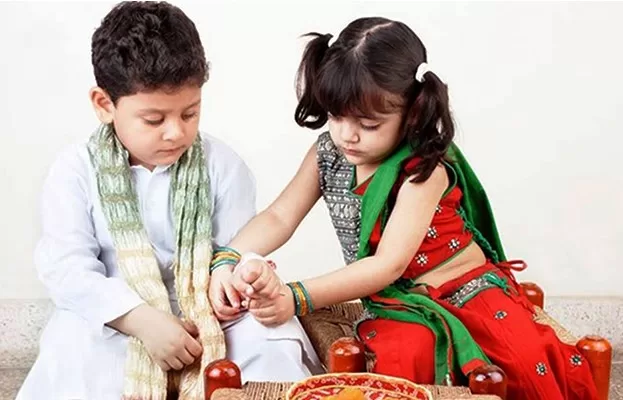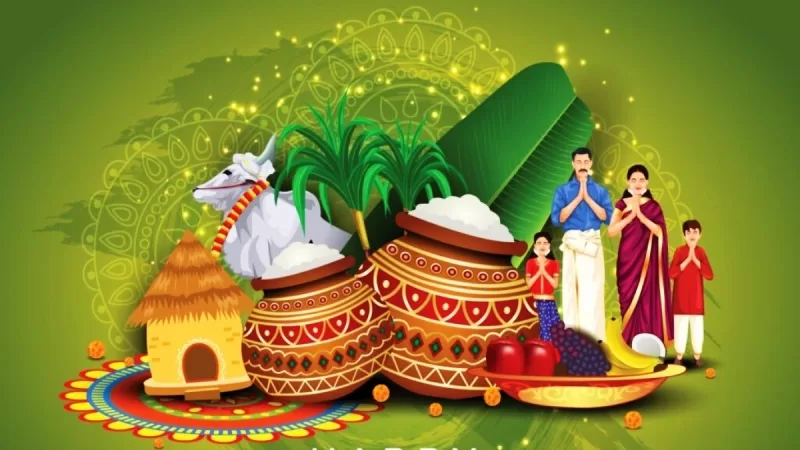
Raksha Bandhan – The Eternal Bond of Love Between Siblings
Raksha Bandhan: The Eternal Bond of Love Between Siblings
In the colorful tapestry of Indian festivals, Raksha Bandhan stands out as one of the most emotionally significant and culturally rich celebrations. It is a day dedicated to the pure bond of love, protection, and togetherness between brothers and sisters.
Celebrated on the full moon day (Purnima) of the Hindu month of Shravan (July-August), Rakhi goes far beyond just rituals—it’s a celebration of unbreakable family ties and lifelong promises.
What is Raksha Bandhan?
“Raksha” means protection, and “Bandhan” means bond—together, the festival signifies the sacred bond of protection.
On this day:
Sisters tie a rakhi (a sacred thread) on their brothers’ wrists.
Brothers, in turn, vow to protect their sisters for life.
It’s followed by exchange of gifts, sweets, and heartfelt moments.
In today’s world, the festival has expanded to include cousins, friends, and even sisters tying rakhi to sisters or to those they consider protective figures—proving that love knows no boundaries.
Origin & Mythology Behind Rakhi
The tradition of Raksha Bandhan dates back thousands of years. Here are some of the most cherished stories:
Draupadi and Lord Krishna
When Krishna injured his finger, Draupadi tore a piece of her saree and tied it to stop the bleeding. Moved by her gesture, Krishna vowed to protect her always. This became a symbol of the rakhi bond.
Rani Karnavati and Emperor Humayun
Rani Karnavati of Mewar sent a rakhi to Mughal Emperor Humayun, asking for protection against invaders. Honoring the bond, Humayun rushed to her aid.
Yama and Yamuna
The god of death, Yama, was tied a rakhi by his sister Yamuna. He was so touched that he granted her immortality and promised to visit her annually.
Rakhi Traditions and Celebrations
Preparation: Homes are cleaned and decorated. Sisters shop for beautiful rakhis and gifts.
Rakhi Thali: Decorated with a diya (lamp), rice, kumkum, sweets, and the rakhi.
Ceremony:
Sister applies a tilak on the brother’s forehead.
She ties the rakhi on his wrist.
She prays for his well-being and offers sweets.
The brother gives her a gift and promises protection.
Modern-Day Raksha Bandhan
In today’s fast-paced, often virtual world:
E-rakhis and digital gifts have become common.
Siblings separated by distance connect via video calls and messages.
Some people celebrate Rakhi by tying rakhis to soldiers, doctors, or social workers, honoring them for their protection and service.
Rakhi is not limited to blood relations anymore—it’s a celebration of love, loyalty, and chosen family.
Rakhi Sweets and Delicacies
Like every Indian festival, Raksha Bandhan is incomplete without sweets and food! Some popular treats include:
Laddoos (boondi, besan, motichoor)
Barfi (coconut, kaju, chocolate)
Rasgulla and Gulab Jamun
Chole Bhature, Pulao, Kheer for special family meals
The Deeper Message of Rakhi
Rakhi is more than a thread—it’s a symbol of love, sacrifice, duty, and emotional security. It teaches:
Respect for relationships
Strength in familial love
Inclusivity in how we define bonds
Final Thoughts
As we celebrate Raksha Bandhan, let’s not just follow rituals, but also appreciate the people who have protected, loved, and stood by us—be it a brother, sister, cousin, friend, or parent.
So whether you’re tying a thread on someone’s wrist or sending a virtual hug across the miles, let Rakhi remind us all:
Love is the strongest thread of all.
Happy Raksha Bandhan!










